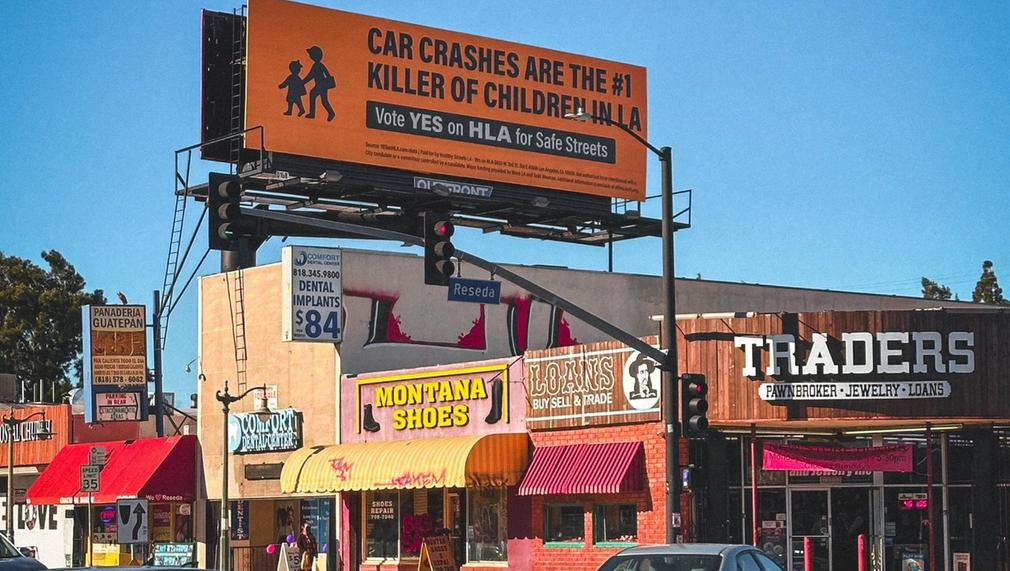Ending traffic deaths in the car capital of the country
The City of Los Angeles has the most pedestrian fatalities in the country, and for the second year in a row, more people have died due to traffic violence than homicide. Ten years ago, the city committed itself to Vision Zero, a commitment to end all deaths due to traffic crashes. Ten years later, traffic deaths are near an all time high. This project will analyze why the City has failed to achieve Vision Zero, tell the stories of those impacted by this horrible trend, and lay out real solutions to actually achieve Vision Zero in Los Angeles.

What is the primary issue area that your application will impact?
Community safety
In which areas of Los Angeles will you be directly working?
City of Los Angeles (select only if your project has a citywide benefit)
In what stage of innovation is this project, program, or initiative?
Expand existing project, program, or initiative (expanding and continuing ongoing, successful work)
What is your understanding of the issue that you are seeking to address?
In 2015, the City of Los Angeles declared itself to be a Vision Zero city, and committed to eliminate traffic deaths by 2025. Ten years later, traffic deaths are at an all-time high and pedestrian deaths have doubled to over 300 per year. In 2023 and 2024, the City passed a grim milestone, with more people dying by traffic deaths than by homicides each year. In the same time period, traffic deaths became the number one killer of children, surpassing firearms. Los Angeles, as the “car capital” of the United States and also its second largest city, sets a powerful example for the rest of the country. We cannot make empty promises while people continue to die in our streets. This project will be both a retrospective of what went wrong in the last 10 years, and a resource to provide hope and tools to reverse this horrible trend, with the ultimate goal of achieving zero traffic deaths in the City of Los Angeles.
Describe the project, program, or initiative this grant will support to address the issue.
We will solve this problem by activating Angelenos, motivating them through storytelling and data, and giving them easy-to-use tools to apply political pressure so that politicians expedite the changes needed to achieve Vision Zero. The website and campaign will be launched in December 2025, on the 10th anniversary of Vision Zero in the City of Los Angeles.
Our project will:
Analyze the Vision Zero program using data. While broadly LA’s streets have gotten more dangerous - we want to put them in context with local and national trends.
Understand the anecdotal history of Vision Zero in LA. We will conduct interviews with Vision Zero staff and other advocates to build an oral history of street safety over the last decade.
Create a path to Vision Zero. We will analyze the last decade of crash data to generate crash tree diagrams that will put us on a data driven path to achieve zero annual traffic deaths.
Armed with data, we will translate our findings into a public facing website and media campaign.
To many, the idea of “zero” traffic deaths seems far fetched. We will explain not only how this goal is possible, but realistic, based on proven solutions from cities that have actually achieved Vision Zero. Visitors will be able to, with a few clicks, email the relevant people in power and demand change in their neighborhood.
Lastly, we will launch a media campaign with the website. We will use a mix of stories from victims of traffic violence, statistics and visual storytelling.
Describe how Los Angeles County will be different if your work is successful.
If our work is successful, we will no longer pay lip service to Vision Zero, and will actually commit the required focus and resources to achieving it. On the ground, the difference will be palpable. Achieving Vision Zero means Angelenos being able to cross the street without the fear of getting hit by a car. It means kids being able to bike themselves to school because the streets are that safe. It means that Los Angeles will no longer lead the nation in traffic deaths. And if the car capital and second largest city of the country can achieve that, it will set an example for cities across the country.
Approximately how many people will be impacted by this project, program, or initiative?
Direct Impact: 150,000
Indirect Impact: 3,800,000